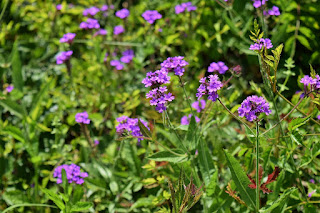Contact Information:
801 US 117 Bypass South
Goldsboro, NC 27530
Phone: (919) 731-1653
Email: waynesborough@yahoo.com
Directions:
The park is located just west of Goldsboro. From the intersection of I-795 and US-70 Business, go south on I-795, which merges with US-117 in half mile. Continue on US-117 south for 0.7 miles and turn right into the park.
Map:
Trails:
There are about 4 miles of nature trails in the park, though some are overlapping.
Blue Trail:
Length: 1.2 miles
The Blue Trail is a shorter loop from the Orange Trail, splitting off after Churchill-Cogdell Cemetery. See the Orange Trail description below.
Orange Trail:
Length: 1.8 miles
The Orange Trail starts at the Visitor Center and proceeds through the Historical Village to an open field near the trail parking area. Towards the end of the field is a junction, where left is Red Trail and right is Orange/Blue/Yellow Trail. Go right and follow the path to Churchill-Cogdell Cemetery. Shortly after the cemetery, the Blue Trail splits off the left. In another quarter-mile, Yellow Trail does the same. The orange trail leads out to an overlook of Little River near the confluence with Neuse River. The trail then loops around following the Neuse downstream. The Yellow and Blue Trails rejoin and then the combined trail turns left away from the river and passes through a nice cypress swamp. Near cemetery, the trail crosses itself and leads through another open field to the trail parking. Turn left and follow the road back to the visitor center.
Red Trail:
Length: 0.8 miles
The Red Trail starts with all the other trails at the Visitor Center. After passing through the Historical Village and the open area, turn left at the junction. The trail passes an overlook of the Neuse River and heads into the woods making a small loop.
Yellow Trail:
Length: 1.5 miles
The Blue Trail is a shorter loop from the Orange Trail, splitting off shortly before reaching Little River. See the Orange Trail description above.
Cogdell Cemetery:
Cogdell Cemetery is the only site that is from the original town of Waynesborough. It was built by the Churchill and Cogdell families and its a very pretty cemetery. To see it, follow the Orange/Blue/Yellow Trails about a quarter mile past the split from Red Trail and a short spur on the right leads up to the cemetery.
The Historical Village is made up of old buildings from Wayne County though none are from Waynesborough. They're all located right by the Visitor Center within a short walk.
The Park Hill School was built in the late 19th century in southwestern Wayne County. Like most in rural areas at the time, it was a one-room school. The school closed in 1925 and was relocated to Old Waynesborough in 1990.
Faircloth Law Office was a two-room office built in Goldsboro in 1868. William Turner Faircloth became Chief Justice of the North Carolina Supreme Court in 1895 and served until his death in 1900.
Roberts Schoolhouse was built around 1890 in southeastern Wayne County and operated until 1926. It was relocated to Old Waynesborough in 1999.
The hay barn, dating from the late 19th century, was located on a Wayne County farm and used to store winter food for animals.
Wildlife:
Gray's sedge (Carex grayi)
Blog Entries:
01-Jun-2024: Cliffs of the Neuse on National Trails Day
14-Aug-2022: Cliffs of the Neuse
10-Feb-2018: Goldsboro Hikes
External Links:
Old Waynesborough website: http://www.oldwaynesborough.org















No comments:
Post a Comment